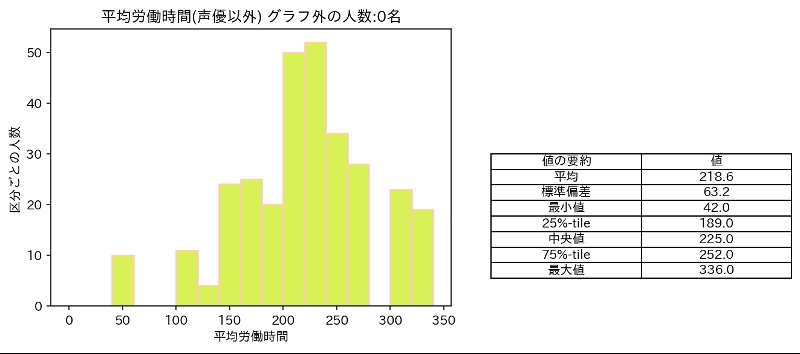The Nippon Animation Film Culture Association (NAFCA) recently disclosed findings from its inaugural survey on the working conditions within the anime industry. Their objective was to validate whether the prevailing perception of low income and prolonged working hours in the industry held true.
Conducted from December 4, 2023, to January 31, 2024, the survey garnered 323 responses from individuals working in various capacities within the anime sector.
Of the respondents, 59% (191 individuals) identified as animators, making them the largest group, followed by 44 directors, 35 production-related staff, 27 character and mechanical designers, 23 prop and costume designers, 23 voice actors, 20 directors, 15 finishing artists, 14 in art, 11 in cinematography and CG respectively, and 10 in the sound department, with only 4 as scenario writers.
The survey outcomes validated the widespread belief of overwork and underpayment prevalent in the anime industry.

Staff in the Anime Industry: Long Hours of Work
According to the NAFCA survey, the average working hours for anime industry personnel stood at 219 hours, notably higher than the national average of 162.3 hours. The maximum recorded working hours in the anime industry reached 336 hours, with a median of 225 hours.
Out of the respondents, 71.4% reported working 8 hours or more per day, and 30.4% stated working 10 hours or more daily. Furthermore, 58.8% of respondents reported having only 6 days off per month on average.
Interestingly, even as individuals aged, the trend of working long hours persisted, with 69% of respondents in their 50s reporting 8 hours or more of work daily, and 21% working 10 hours or more.
Despite improvements over the past six years, with a notable decrease in the percentage of animators working excessive hours, the industry still faces chronic human resource shortages.

When broken down by job role, personnel in the sound department logged particularly long hours, with 38% working 12 hours or more daily. Directors followed at 22%, while across all job categories, over 30% reported working 10 hours or more daily.
However, the survey also highlighted that only directors, designers, CG artists, and scenario writers enjoyed relatively comfortable working hours, while other roles experienced significantly longer workdays.
Gender disparities were evident in the survey, with women more likely to work longer hours, although there was little difference in work patterns between men and women in anime production.

Earnings in the Anime Industry: Low Income
In terms of remuneration, the survey revealed that 37.7% of respondents earned less than 200,000 yen per month from their anime-related work. Of these, 77.6% did not engage in any work outside the anime industry, indicating they relied solely on an annual income of 2.4 million yen or less.
By job role, finishing and scenario writers reported notably low incomes, with over 60% earning less than 200,000 yen per month. Similarly, 43% of animators and 45% of art directors earned below 200,000 yen per month.
However, 11% of animators reported annual incomes exceeding 10 million yen, suggesting significant earning potential with honed skills. Additionally, approximately 15% of respondents in character/mechanical design and prop/costume design reported earning over 700,000 yen per month or 8.4 million yen annually, presenting career advancement opportunities for animators.

Moreover, over 50% of those who transitioned to directing reported monthly earnings exceeding 500,000 yen (6 million yen annually), offering prospects for a stable career in the field. Nevertheless, compared to the average annual salary of project managers outside the anime industry (8.915 million yen), anime industry staff generally receive lower wages.
The survey highlighted disparities in hourly wages, with finishing and audio-related jobs offering the lowest wages at 667 yen and 875 yen, respectively, while directors earned the highest hourly wage at 2,111 yen. Nearly 14% of anime staff earned hourly wages ranging from 600 to 800 yen.
The median hourly wage in the anime industry, at 1,111 yen, barely exceeded the national average of 1,004 yen as of March 2024, and was slightly lower than Tokyo’s minimum wage of 1,113 yen.
Despite variations across roles, the survey underscored abnormally low wages in the anime industry, lending credence to arguments against exploitation.













